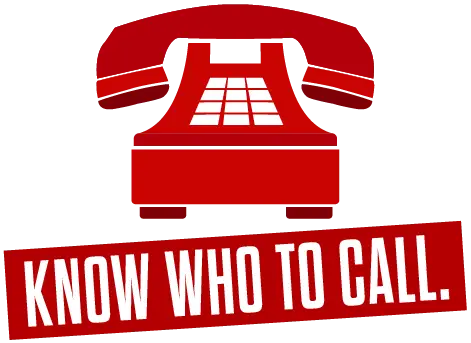Car accidents can have unexpected effects on the body, often leaving behind injuries that are not immediately obvious. It is crucial to seek medical attention after an auto accident, as injuries like whiplash and back pain are widely recognized, but spinal trauma from a collision may also trigger or worsen scoliosis—a sideways curvature of the spine. For individuals with undiagnosed or mild scoliosis, the sudden force of an accident can exacerbate the condition, resulting in postural imbalances, chronic pain, and reduced mobility.
In this blog, we’ll explore the connection between car accidents and scoliosis, discuss how spinal trauma can trigger or worsen the condition, review key symptoms to watch for after an accident and highlight the importance of seeking care from an experienced Atlanta chiropractor for early diagnosis and effective treatment.
What is Scoliosis?
Scoliosis is a medical condition where the spine develops an abnormal curvature, shifting sideways to form an “S” or “C” shape. Unlike the normal, vertical alignment of the spine, scoliosis causes the vertebrae to deviate laterally, leading to imbalances in posture and, in some cases, functional limitations. This condition is typically identified during growth phases but can affect adults as well.
Types
There are several forms of scoliosis, each with unique causes and characteristics:
- Idiopathic Scoliosis: The most common type, especially among adolescents, with no identifiable cause.
- Congenital Scoliosis: Present at birth due to spinal malformations during fetal development.
- Neuromuscular Scoliosis: Associated with underlying neurological or muscular conditions, such as cerebral palsy or muscular dystrophy.
- Degenerative Scoliosis: Occurs in adults due to wear and tear on the spine over time.
Who is Affected?
Scoliosis affects both genders, but girls are more likely to develop moderate to severe forms, especially during adolescence. In children, schools often screen for scoliosis to catch the condition early when bracing or physical therapy can help prevent progression. Adults may develop scoliosis due to aging or as a secondary effect of trauma or surgery.
Signs and Symptoms
The degree of curvature varies, and symptoms range from mild to severe. Common signs include:
- Uneven shoulders or hips
- A visible curve in the spine
- Leaning to one side
- Back pain or stiffness, particularly in adults
- Breathing difficulties in extreme cases
Scoliosis often progresses slowly, making early detection important to manage the condition effectively and prevent long-term complications.
How Car Accidents Impact the Spine
Car accidents can place intense, sudden force on the body, particularly the spine, leading to both immediate injuries and long-term complications. Even seemingly minor collisions can cause trauma that affects spinal alignment, muscle function, and nerve health. Recognizing how such impacts affect the spine is critical for early diagnosis and effective treatment.
Whiplash and Spinal Strain
Whiplash is one of the most common injuries from car accidents. It occurs when the neck snaps back and forth due to sudden acceleration or deceleration, stretching muscles, ligaments, and vertebrae beyond their normal range. While typically associated with neck pain, severe whiplash can also misalign the upper spine, potentially contributing to long-term issues such as scoliosis or other spinal misalignments. Claiming compensation for car accident injuries like whiplash can be complex, especially when pre-existing conditions are aggravated, requiring substantial evidence to prove the connection.
Spinal Misalignments and Disc Injuries
The force from a car accident can disrupt the natural curvature of the spine. This impact may cause vertebrae to shift out of alignment or increase existing curvature, potentially triggering or worsening conditions like scoliosis. Additionally, herniated discs—where the soft cushion between vertebrae bulges or ruptures—are a frequent result of trauma, causing pain and restricting movement.
Aggravation of Pre-existing Conditions
For individuals with pre-existing spinal conditions, such as mild or undiagnosed scoliosis, proving that a car accident caused the worsening of a medical issue is crucial. Car accidents can accelerate the progression of symptoms, turning a minor curvature into a more severe condition, resulting in increased pain, posture issues, or limited mobility. These cases require specialized care, including physical therapy or chiropractic adjustments, to restore alignment and function.
Nerve Compression and Mobility Issues
Injuries from accidents can also lead to nerve compression, especially if vertebrae shift or discs herniate. This compression can cause radiating pain, numbness, or weakness in the limbs. When nerves in the spinal cord are affected, everyday activities such as walking or sitting for extended periods may become difficult, further complicating recovery.
Long-term Complications of Spinal Trauma
Spinal cord injuries from car accidents can have serious consequences, including chronic pain and functional impairments. Over time, unresolved trauma can cause degenerative changes, such as spinal stenosis or arthritis, that restrict mobility and diminish quality of life. These long-term effects highlight the importance of prompt diagnosis and tailored treatment plans, even when initial symptoms seem mild.
Can a Car Accident Directly Cause Scoliosis?
The relationship between car accidents and scoliosis is complex. Can car accidents potentially cause or worsen scoliosis? Yes, the significant forces experienced during collisions, particularly in rear-end accidents, can lead to spinal damage. This trauma can trigger symptoms or aggravate existing spinal conditions, emphasizing the importance of seeking medical attention promptly after an accident. Understanding the nuances of trauma-induced scoliosis helps individuals seek the right care and avoid unnecessary complications.
Trauma-Induced vs. Pre-Existing Scoliosis
Scoliosis is usually classified as idiopathic, congenital, or neuromuscular, meaning its origins are often unrelated to external injuries. However, a car accident can expose or aggravate existing scoliosis that was previously undetected. In some cases, spinal trauma disrupts the alignment of the vertebrae to the point where scoliosis-like curvatures become visible after the incident. Additionally, traumatic scoliosis can occur as a result of the impact from collisions, leading to spinal injuries that necessitate immediate medical attention to address symptoms and potential long-term implications.
Can Trauma Alone Cause Scoliosis?
Directly attributing scoliosis to a car accident is rare but not impossible. Although scoliosis often develops gradually, severe spinal trauma can alter the structure of the spine, leading to curvature over time. In cases where scoliosis is diagnosed post-accident, the trauma likely acted as a trigger for an underlying condition rather than a standalone cause.
How Accidents Mimic or Exacerbate Scoliosis
Injuries such as whiplash or herniated discs can mimic the symptoms of scoliosis by causing the spine to shift or lean unnaturally. Muscle imbalances or nerve pain resulting from spinal misalignments may resemble scoliosis-like posture issues. If an individual had mild or undiagnosed scoliosis prior to the accident, the force of the collision might accelerate its progression, making symptoms more prominent.
Diagnosing Post-Accident Spinal Curvature
A careful evaluation by healthcare professionals is essential to differentiate between trauma-induced curvature and pre-existing scoliosis. Doctors use imaging tools such as X-rays, MRIs, or CT scans to assess spinal alignment and confirm any changes resulting from the accident. A thorough medical history, combined with physical examinations, helps determine whether the accident aggravated a latent condition or created a new spinal issue. In severe cases, a neurosurgeon or orthopedic surgeon may be required to perform surgical intervention to address damaged discs or fractured vertebrae.
Why Prompt Treatment is Essential
Early intervention is crucial for individuals experiencing scoliosis-like symptoms after a serious car accident, as such incidents can exacerbate pre-existing conditions. Left untreated, trauma-induced spinal misalignments can progress into chronic pain, restricted mobility, and long-term complications. Chiropractic care, physical therapy, or bracing may help restore alignment and reduce pain. In severe cases, surgical intervention might be necessary to stabilize the spine and prevent further deterioration.
Symptoms to Watch Out For After a Car Accident
After a car accident, symptoms related to spinal injuries might not appear immediately, making it essential to monitor your body closely. Some issues may surface hours, days, or even weeks later, potentially indicating more serious underlying problems such as scoliosis or spinal misalignment. Early detection of these symptoms can help prevent long-term complications.
Postural Imbalance
One of the most noticeable signs of spinal trauma is postural imbalance. Individuals may observe that one shoulder or hip appears higher than the other, or that they are leaning slightly to one side without realizing it. These subtle shifts can indicate changes in spinal alignment, a hallmark of developing or aggravated scoliosis.
Persistent Back Pain or Stiffness
Back pain, whether mild or severe, is a common symptom following a car accident. If pain or stiffness persists beyond a few days or becomes more intense, it may suggest spinal misalignment or disc-related issues. In cases where scoliosis is already present, the accident can worsen discomfort and accelerate the condition’s progression.
Reduced Range of Motion
A restricted range of motion, especially in the neck or lower back, can signal spinal trauma. Individuals might find it difficult to bend, twist, or turn without experiencing pain. This limitation could result from soft tissue injury, whiplash, or early signs of spinal curvature, which should be evaluated by a medical professional.
Numbness or Tingling in Limbs
Nerve compression caused by spinal injuries may lead to sensations of numbness, tingling, or weakness in the arms or legs. These symptoms often point to herniated discs or vertebral misalignments, which can mimic scoliosis or exacerbate pre-existing conditions. If nerve symptoms develop, prompt medical attention is critical.
Difficulty Breathing
In more severe cases, trauma to the spine can impact lung capacity, causing breathing difficulties. This is a rare but serious symptom that may occur when scoliosis progresses or if thoracic spinal injuries restrict rib movement. Any shortness of breath following an accident should not be ignored and warrants immediate medical evaluation.
When to Seek Medical Help
Even if symptoms seem minor at first, it is crucial to consult a healthcare provider following a car accident, especially if you experience back pain, posture changes, or nerve-related symptoms. Early diagnosis through physical exams and imaging tests can prevent further complications and ensure effective treatment, whether through physical therapy, chiropractic care, or other interventions. Additionally, proving how an accident may have aggravated pre-existing conditions is essential when filing a personal injury claim, as strong medical evidence is necessary to navigate the complexities of negligence laws and secure compensation.
Seek Treatment From an Atlanta Chiropractor ASAP!
If you’ve been in a car accident and are experiencing back pain, postural changes, or other spinal issues, don’t wait for the symptoms to worsen. Our team at Hurt911® is here to help you get the care you need. We specialize in diagnosing and treating accident-related injuries, including scoliosis. It is crucial to secure compensation for medical bills and lost wages, as these can significantly impact your financial stability following an accident.
Schedule an appointment with us today at 404-687-9000!










